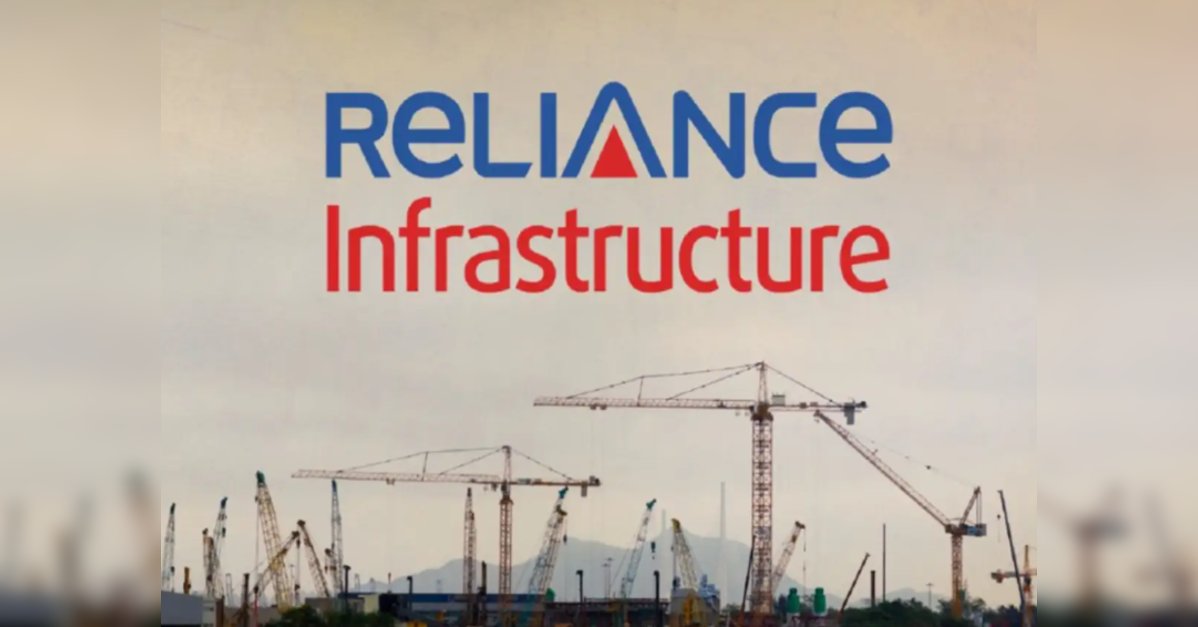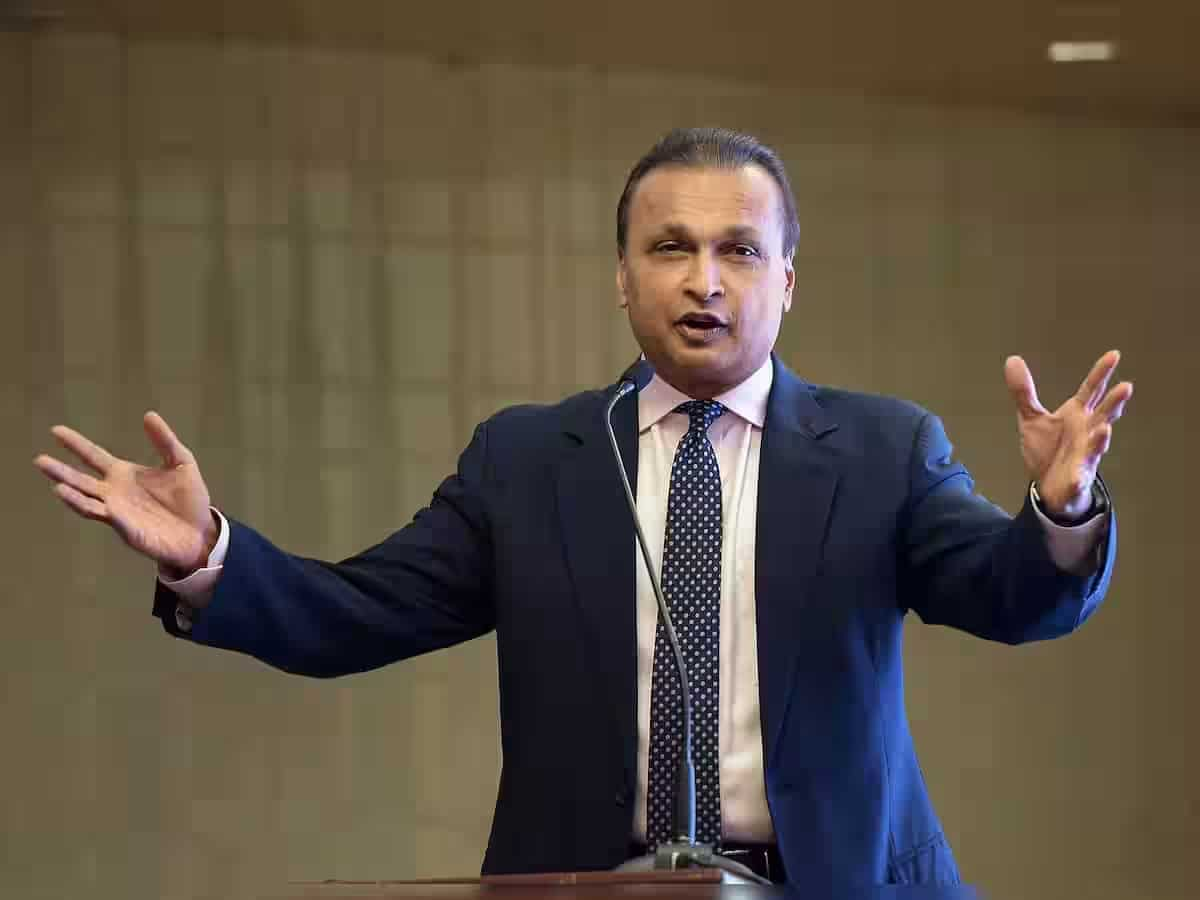Anil Ambani's infrastructure gambit: High risk, high reward?
Reliance Infrastructure (Reliance Infra), once a debt-ridden business of the Anil Ambani-led Reliance Group, is back in the headlines. And this time for reasons that are hopeful but risky.
After gaining 90% over the past year, Reliance Infra’s stock dipped sharply by up to 5.12 on July 3rd. The trigger? A notice from the State Bank of India, which classified a loan to Reliance Communications (RCom), a separate Anil Ambani group entity, as fraudulent.
This development had no direct connection to Reliance Infrastructure’s business. So, the company quickly issued a clarification stating exactly that.
Even though Reliance Infra has nothing to do with the RCom loan, no guarantees, no financial exposure, the group name was enough to cause short-term volatility. That’s the reality of sentiment-driven trading.
But strip away the noise, and the long-term story looks quite different.
The past few years have seen Reliance Infrastructure undergo a quiet change. One that may not be reflected in daily market moves but is certainly visible in its financials and strategy.
Let’s start with the fundamentals.
Reliance Infra’s sales have grown at a 6% CAGR over the last three years. That isn’t so high. But just sales growth isn’t the complete story. What matters is how that income turns into profits and returns.
And here’s where the excitement begins.
The net profit has grown at a compounded annual growth rate (CAGR) of 93% in the last three years. The FY25 net profit grew to a massive ₹8,079 crore compared to a loss of ₹1,046 crore in FY24. And you get a sense of how dramatic the turnaround has been. The numbers exclude exceptional items.
The operating margins surged from 9% in FY24 to 16% in FY25, reinforced by a focused working model. The company has been getting rid of small-margin projects, improving execution, and gradually refining its capital structure.
Let’s take a closer look.
| Revenue (₹ crore) | 17,735 | 19,689 | 22,398 | 22,805 | 23,592 |
| Net Profit (₹ crore) | 2960 | -840 | -73 | -1046 | 8079 |
| Operating Margin (%) | 1% | 9% | 6% | 9% | 16% |
| Return on Capital Employed (ROCE) | 19% | 5% | 9% | 7% | 34% |
| Debtor Days | 81 | 76 | 42 | 27 | 24 |
(Source: Screener.in)
That last row is particularly telling. The debtor days have steadily reduced from 81 in FY21 to 24 days in FY25, while the equity capital has increased from ₹263 crores in FY21 to ₹396 crores in FY25. These numbers aren’t just for show. They affect interest costs, credit ratings, and the company’s ability to finance new projects through internal growth rather than fresh borrowing.
Now let’s move to the dangers. While the long-term trend seems optimistic, there are short-term fears that investors can’t overlook.
Reliance Infra has no business transactions with RCom, but they still share a corporate legacy. And for the market, even a hint of guilt due to association is real. The SBI classification of RCom’s loan as “fraudulent” is serious, and the media was quick to link all Anil Ambani companies in a single story.
Both Reliance Infrastructure and Reliance Power immediately issued statements isolating themselves. For investors, though, the takeaway is clear. Expect such sentiment-led instability whenever a new headline hits around any Reliance Anil Ambani Group entity.
FY25’s ₹9,177 crore profit sounds excellent, but a portion is likely due to exceptional gains of ₹1,098 crore, which included asset monetization and debt settlements. When Q1 and Q2 FY26 results come out, investors should look for sustained operating profit and net margins from the main infrastructure and EPC businesses.
The company’s conditional borrowings at ₹6,361 crore in FY25 haven’t moved a lot in the last few quarters. These liabilities aren’t current debts, but they could become payable based on current clashes or legal results. This cash flow issue may not crop up now. So, investors and analysts must keep an eye on it.
With capex ramping in defence, metro rail projects, and smart infrastructure, can free cash stay positive and debt remain contained? Watch the post-capex operating cash to PAT ratio; if it drops below 60%, we could see leverage creep back.
The real test is execution. From the Falcon-2000 assembly in Nagpur, Rheinmetall & Diehl ammunition plants, to metro transit lines, on-time execution will matter. Any delays will affect the revenue and margin growth.
The short-term noise doesn’t delete the long-term details. Here’s what has worked for Reliance Infra:
A drop in the debt from ₹12,718 crores in FY22 to ₹6,361 crores in FY25 will let Reliance Infra take on new projects without funding worries. That’s a crucial benefit in infrastructure, where capital needs are constant and cyclic. Any instability can affect companies with a lot of debt.
The operating cash flow for FY25 was ₹3,657 crore, with free cash flow exceeding ₹3,500 crore. It means Reliance Infra isn’t just showing paper profits; it is also collecting receivables, handling working capital well, and creating actual money in excess. Money that can be used for dividends, buybacks, or new capital expenses.
The company is slowly expanding into new, high-margin sectors such as defence, urban transit, and smart infrastructure. These pivots suggest a tech-empowered future. It’s still early to know if these changes will bring exceptional rewards. Yet, they show the organization believes it’s time to go beyond roads and bridges.
Despite a great financial year, the stock is still trading at a Price/Earnings of 3.3x and a Price/ Book value of 1.0x today. That would be considered low valuation for a company with 38% ROE and improving cash flows.
The company’s peers trade at a P/E in the range of 17x to 34x. And when it comes to P/BV, the range is 2x to 4x.
If the next few quarters continue in the same fashion, a re-rating may be possible. But then, of course, there are still significant risks that can keep the valuations anchored.
So, where does that leave current or potential investors?
Watch for these five crucial areas:
Instability is not new to Reliance Infrastructure. It has seen credit downgrades, debt crises, delayed projects, and reputational issues.
And yet, it’s managed to make a comeback with careful capital administration, improved operational focus, and a forward-looking project pipeline.
The fall in early July 2025 might spook traders. But long-term investors must look past the noise. The company has restored its balance sheet, shown steady cash flow, and is at a new growth stage that’s more varied with the potential to grow manifold.
In short: Reliance Infra may be shaky in the short term, but it’s not crumbling. And if the fundamentals continue to strengthen, the current instability could well be an opportunity in disguise. Only time will tell.
Note: We have relied on data from www.Screener.in throughout this article. Only in cases where the data was not available, have we used an alternate, but widely used and accepted source of information.
The purpose of this article is only to share interesting charts, data points and thought-provoking opinions. It is NOT a recommendation. If you wish to consider an investment, you are strongly advised to consult your advisor. This article is strictly for educative purposes only.
Archana Chettiar is a writer with over a decade of experience in storytelling, and, in particular, investor education. In a previous assignment, at Equentis Wealth Advisory, she led innovation and communication initiatives. Here she focused her writing on stocks and other investment avenues that could empower her readers to make potentially better investment decisions.
The website managers, its employee(s), and contributors/writers/authors of articles have or may have an outstanding buy or sell position or holding in the securities, options on securities or other related investments of issuers and/or companies discussed therein. The content of the articles and the interpretation of data are solely the personal views of the contributors/ writers/authors. Investors must make their own investment decisions based on their specific objectives, resources and only after consulting such independent advisors as may be necessary.
You may also like...
Diddy's Legal Troubles & Racketeering Trial

Music mogul Sean 'Diddy' Combs was acquitted of sex trafficking and racketeering charges but convicted on transportation...
Thomas Partey Faces Rape & Sexual Assault Charges

Former Arsenal midfielder Thomas Partey has been formally charged with multiple counts of rape and sexual assault by UK ...
Nigeria Universities Changes Admission Policies

JAMB has clarified its admission policies, rectifying a student's status, reiterating the necessity of its Central Admis...
Ghana's Economic Reforms & Gold Sector Initiatives

Ghana is undertaking a comprehensive economic overhaul with President John Dramani Mahama's 24-Hour Economy and Accelera...
WAFCON 2024 African Women's Football Tournament

The 2024 Women's Africa Cup of Nations opened with thrilling matches, seeing Nigeria's Super Falcons secure a dominant 3...
Emergence & Dynamics of Nigeria's ADC Coalition

A new opposition coalition, led by the African Democratic Congress (ADC), is emerging to challenge President Bola Ahmed ...
Demise of Olubadan of Ibadanland
Oba Owolabi Olakulehin, the 43rd Olubadan of Ibadanland, has died at 90, concluding a life of distinguished service in t...
Death of Nigerian Goalkeeping Legend Peter Rufai

Nigerian football mourns the death of legendary Super Eagles goalkeeper Peter Rufai, who passed away at 61. Known as 'Do...




